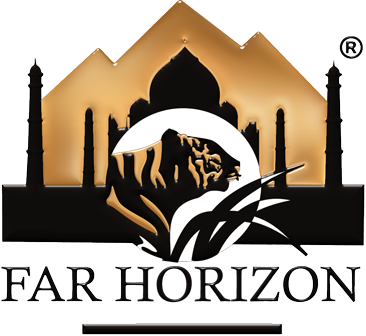Karnataka with 7 Nights Kerala Cruise
more_vert
-
Duration16 Days
-
Region
-
Category
-
Best Time
- September - April
Introduction
Far Horizon takes you on a journey through the heart of the Dravidian South. Karnataka is a tapestry of culture, flavors, landscapes, and timeless beauty. Glide through the backwaters of Kerala – God's own country. The backwaters give you an opportunity to Experience the Living Cultures of Kerala at close quarters.
Visit Kabini where you can see wildlife in its natural habitat. Walk through the Spice Plantations for a glimpse of the exotic spices used in Indian cooking. Kerala is known for its wonderful food, come enjoy the food and learn the secrets of this wonderful cuisine.
Tour Highlights
- Visit the river island town of Srirangapatna
- Visit of Grand Royal Palace in Mysore
- Nagarhole National Park
- Kathakali Dance performance
- Traditional Martial Art performance
- Cooking demonstration and home hosted meal
- Cruising on the Kerala Backwaters
- Village visits and interaction with the local people
- Multicultural city “Cochin”
Destinations Covered
Bangalore
The Garden CityBangalore city is rightly called as the Garden City with a wide array of parks and gardens which are spread all over the city increasing the beauty of the city. Not just this, the city has been adorned with many interesting yet suitable names. Pub City, Shopper's Hot Spot, Silicon Valley, Shopper's Paradise, Pub Hopper's Paradise, Gourmet's Delight, Air-conditioned City, etc. are a few other names.
Mysore
City of PalacesAlso known as the City of Palaces, Mysore retains a quaint charm that never fails to enchant with its rich heritage, magnificent palaces, beautifully laid-out gardens, imposing buildings, broad shady avenues and sacred temples. The charm of this city leaves no one untouched. Situated in the southern part of the Deccan Plateau, Mysore has played a significant role in the history of South India.
Kabini
A Walk into the WildThe Kabini, also called Kapila, is one of the major tributaries of the river Cauvery in southern India. Gushing through two states, being a home to one of the lush forest reserves, and featuring a massive dam, Kabini is one of the famous rivers in South India. It originates from Wayanad in Kerala, flows into the state of Karnataka, and gives birth to the most beautiful reservoir and backwaters.
Kozhikode (Calicut)
A colonial city of trade and tourismKozhikode, formerly romanized as Calicut, is a city in Kerala, India and the headquarters of the Kozhikode district. The Kozhikode metropolitan area is the second largest urban agglomeration in Kerala.
Kochi
Queen of the Arabian SeaKochi (formerly Cochin) is a cosmopolitan city in the state of Kerala with a bustling commercial port. Kochi is the financial capital of Kerala and, with a population of more than 2 million, the biggest urban agglomeration in the state. It is one of the major tourist destinations in India.
Alappuzha
Venice of the EastAlappuzha is the hub of Kerala's backwaters, home to a vast network of waterways, over a thousand houseboats and an important coir industry. Head out towards the backwaters and Alleppey becomes graceful and greenery-fringed, disappearing into a watery world of villages, punted canoes, toddy shops and, of course, houseboats.
Kavalam
A Green HavenKavalam is a village in Kuttanadu, Kerala state, Alappuzha District. India. It is located on the borders of Alapuzha and Kottayam districts, on the banks of Vembanad Lake. The Pampa river flows through the village to merge into the famed Vembanad Lake. Its natural scenic beauty is legendary and has been used by many filmmakers. Relatively untouched by modernity, Kavalam is a green haven.
Kumarakom
The Enchanting BackwatersThe village of Kumarakom is a cluster of little islands on the Vembanad Lake, and is part of the Kuttanad region in Kerala. The bird sanctuary here, which is spread across 14 acres, is a favourite haunt of migratory birds and an ornithologist's paradise. Egrets, Darters, Herons, Teals, Waterfowls, Cuckoo, Wild Duck and migratory birds like the Siberian Stork visit here in flocks and fascinate all visitors.
An enchanting backwater destination, Kumarakom offers visitors many leisure options.
Detailed Itinerary
- Day 1 Arrive Bangalore
- Day 2 Bangalore - Mysore drive (approx. 4 hours' drive)
- Day 3 Mysore
- Day 4 Mysore - Kabini (approx. 3 hours’ drive)
- Day 5 Kabini
- Day 6 Kabini - Calicut (approx. 5 hours’ drive)
- Day 7 Calicut - Cochin By Train
- Day 8 Cochin
- Day 9 Cochin - Alleppey & board RV Vaikundam
- Day 10 Kanjippadom – Karumadi – Thottappalli
- Day 11 Excursion from Thottappalli
- Day 12 Changankari - Champakkulam - Nedumudy – Pulinkunnu
- Day 13 Pulinkunnu - Kainakari - Kavalam
- Day 14 Kavalam – Kumarakom
- Day 15 Kumarakom – Chenganda – Vaikom
- Day 16 Vaikom - Cochin/Departure






















